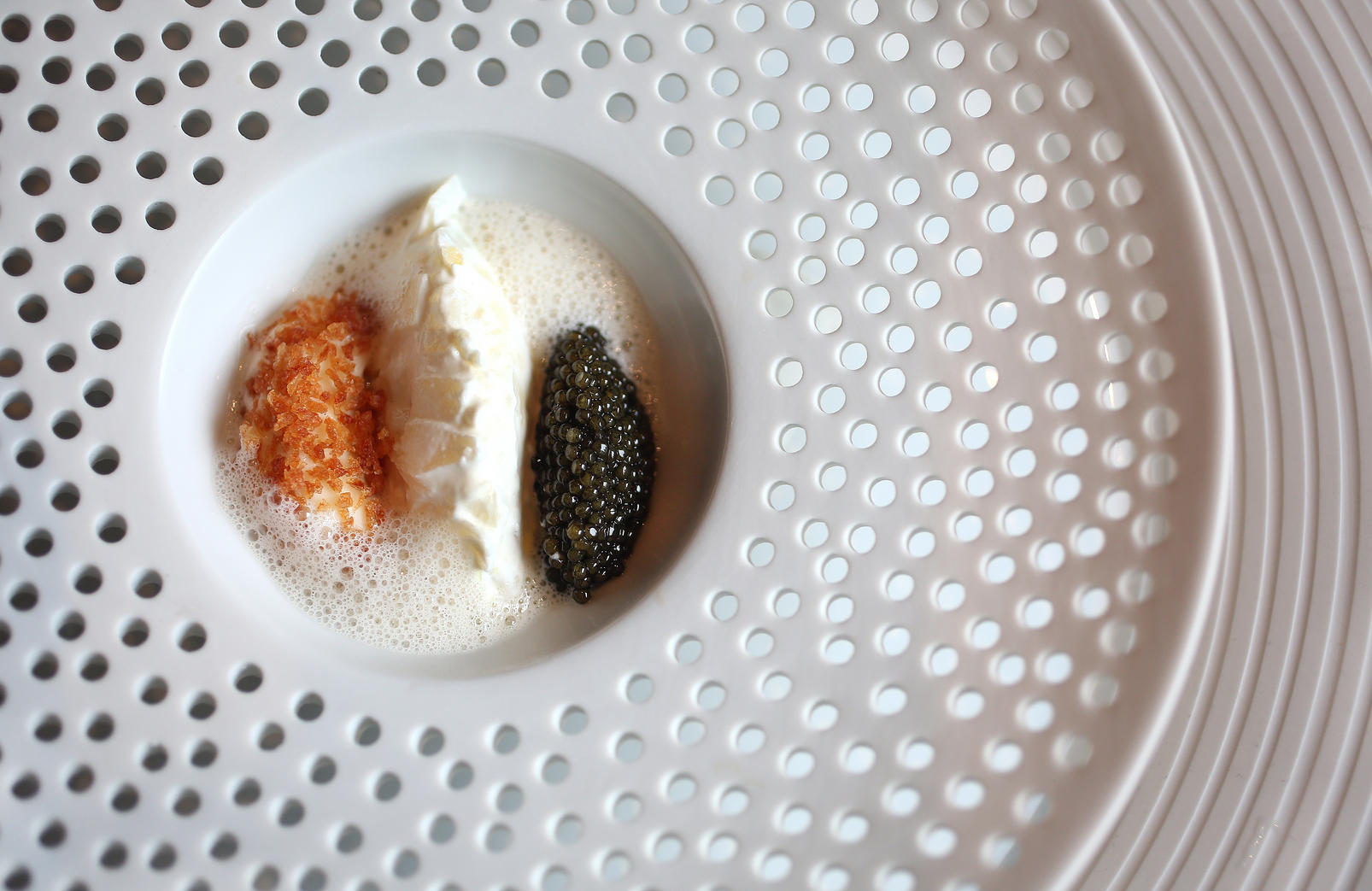


The pinnacle of lavish dining, caviar has deep associations with the upper echelons of society: Royals and aristocrats favored the delicacy, often served with creme fraiche and blinis. As James Bond, Pierce Brosnan once tried to drown a KGB agent-turned-caviar merchant in his own product — an expensive proposition given the price by ounce.
The fish eggs have been seen as a luxury, reserved for New Year’s celebrations and formal occasions, trotted out to impress. But Boston-area chefs are now combating that image, bringing caviar service back into restaurants and using the ingredient in new, more-approachable ways.
“There’s a misunderstanding out there about caviar,’’ says Michael Scelfo, chef-owner of seafood-focused restaurant Waypoint in Cambridge. “It’s one of those things that just has this stigma attached to it. . . . I really wanted to come out of the gate with something special and different when it comes to caviar service.’’
Scelfo offers traditional caviar service every day of the week, featuring a choice between two varieties (Siberian sturgeon caviar from Belgium and Royal Osetra from Israel) accompanied by hard-boiled egg, red onions, chives, vibrant green blini made from white corn and phytoplankton, and doughnut holes with whipped buttermilk crema. The caviar is available in 12, 30, and 50 gram portions, with pricing ranging from $58 to $195. But as a cheeky late-night offering, Scelfo recommends what he calls a “caviar bump’’ — one of those doughnut holes, cracked open and filled with creme fraiche, then topped with caviar and chives. It’s available for $10.
“People just come in and grab one. It’s like doing an oyster shooter,’’ Scelfo says.
Pairing roe with doughnuts may seem like a stunt, but Scelfo says it’s all about making the ingredient more accessible. Chefs like Matthew Delisle at L'Espalier and David Bazirgan at Bambara are trying to do the same thing by adding caviar to smaller dishes with more forgiving price tags.
“It’s about making caviar less of a chichi, froufrou ingredient and more of an everyday item,’’ Bazirgan says. At Bambara, for instance, he has offered American sturgeon caviar as a $4.50 supplement to Beach Point oysters with Meyer lemon granite and chive crème fraiche.
Although a small taste of the briny ingredient may pique the interest of those on a budget, larger amounts of high-quality caviar still rule when restaurantgoers are feeling celebratory. At Row 34, an annual New Year’s Eve tradition has chef Jeremy Sewall serving a pairing of Osetra caviar and NV Krug Grand Cuvee Champagne at cost. Guests can sit at the counter awaiting midnight while tasting caviar placed on their fists between thumb and forefinger, the proper way to do it according to caviar etiquette experts.
“In my mind, there’s something romantic about caviar,’’ Sewall says. “You think of tasting it like you’re tasting wine. . . . You have to consider the pop of the egg or the saltiness or the nuttiness or the creaminess.’’
That romantic, intoxicating allure is something chefs want to share in as many ways as possible. At Little Donkey, chef Jamie Bissonnette serves it casually on a grilled Martin’s potato roll with whipped butter and chives, while the team at Oak + Rowan offers comparison “flights’’ of various types of caviar. Chef Tony Messina at Uni tailors his sample offerings to each guest, asking customers for their likes and dislikes and using their palates to design a custom dish.
Rod Mitchell, owner of Browne Trading, supplies many local chefs with their caviar and says he’s seen the business change over the years. At the height of caviar’s popularity in the late 1990s and early 2000s, demand drove sturgeon to near extinction, causing the price for eggs to skyrocket. Mitchell says farm-raised caviar is not only more sustainable but less expensive.
But even though it’s not as exclusive as it once was, caviar still feels celebratory.
“It’s so much fun,’’ Scelfo says. “The people who really dig caviar don’t like to rush it. It’s a great thing to pick at and graze on while you’re having a great conversation and hanging out with your friends and your family. It’s such a great way to celebrate. We just want people to get in there and enjoy it.’’
Carly Sitrin can be reached at carly.sitrin@globe.com. Follow her on Twitter @carlysitrin



